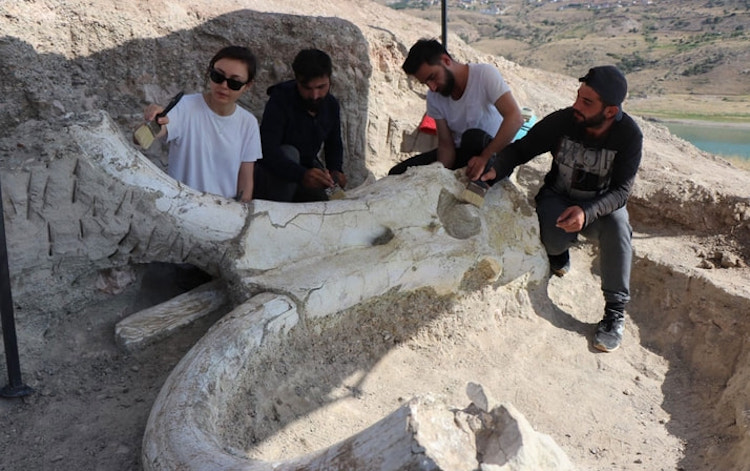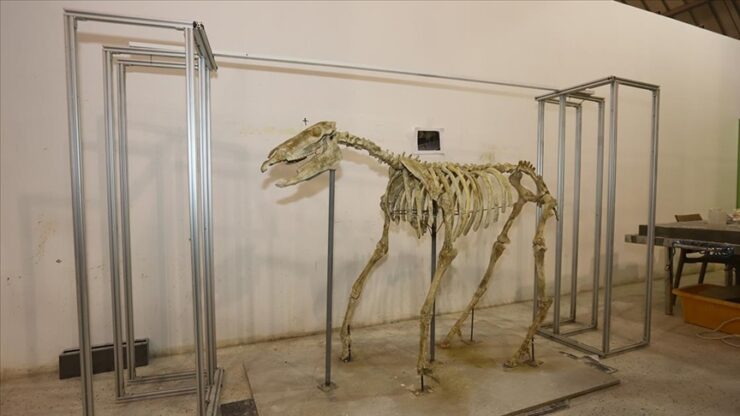After a shepherd discovered the bone in Kayseri province of Türkiye, fossil excavations began in 2018 with the support of the municipality.
Kayseri has great riches in the field of fossils. Murat Adıyaman, a shepherd in the Kocasinan district of Kayseri, found a bone fragment on the banks of the Yamula Dam in 2017. The examination of the samples revealed that the bone fragments were 6 to 7.5 million years old. This year, nearly 400 fossils, believed to be 7.5 million years old, have been found in the region (the total number is close to 2,000). Animal fossils include elephant, three-hoofed horse, bovidae, rhinoceros and giraffe.
Ömer Dağ, an expert anthropologist from the excavation team; “The 7.5 million-year-old fossils belonging to the horse group named “Hipperion” found in the Yamula Dam and Barsama regions may be the ancestors of today’s horses.” (The Hipperion horse group probably became extinct in the Middle Pleistocene period).
“We continue our fossil excavations as long as the climate is favorable during the summer season. Excavation work continues in summer and laboratory work in winter. We carry out cleaning processes in the laboratory. When we look in general, we have three hoofed horses in our horse group named ‘Hipperion’ in our fauna, as well as rhinoceros and giraffe. We also have specimens belonging to the elephant group. Today, the horse has one hoof. Its 2nd and 4th toes have atrophied due to climate adaptation. However, our horse that lived in that period has three hooves. Besides, it is shorter than today’s horses.”



The skeleton of the three-hoofed horse found in the studies was raised by scientists. This helps us to understand and see how the horse with three hooves was able to stand due to the climate.
The fossils of elephants, three-hoofed horses, giraffes and rhinos were unveiled in 2019 in an exhibition titled “Prehistoric elephants of Kayseri”. After the studies, German and Finnish scientists also wanted to come to Kayseri to see the fossils.
Head of the excavation Prof. Dr. Okşan Başoğlu said that some of the fossils in the exhibition are unique in the world. “The fossils are brought to the laboratory, cleaned and strengthened and made ready for the exhibition, and we make replicas of the missing parts. It is not possible to excavate and stay in the area for 12 months, so the land is covered. There are still fossils we cannot unearth.”
